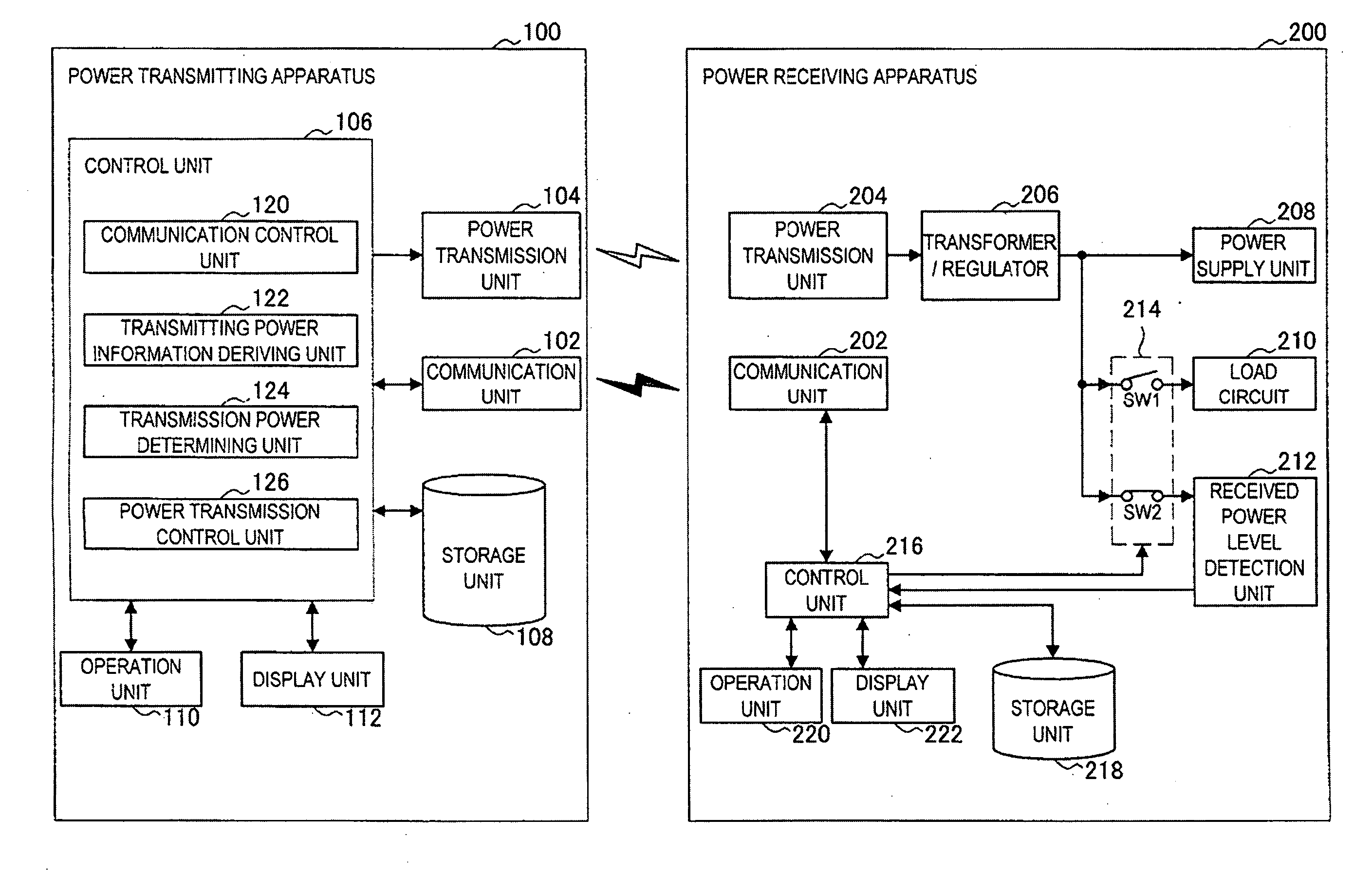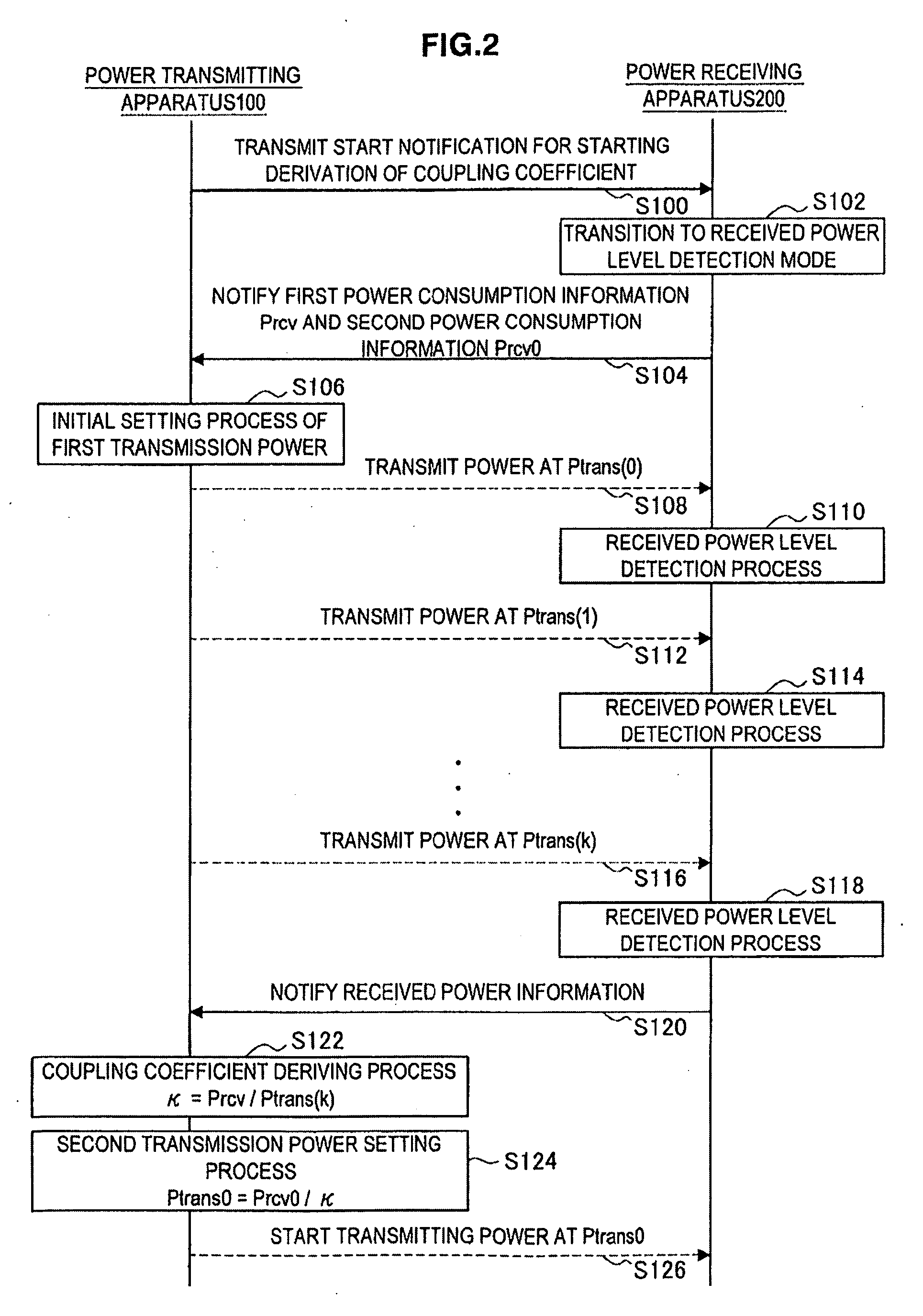Power transmitting apparatus, power receiving apparatus, power transmission method, program, and power transmission system
a technology of power transmission apparatus and receiving apparatus, which is applied in the integration of power network operation system, power supply arrangement, process and machine control, etc., can solve the problems of increasing the power receiving apparatus and the state of the power transmission between the power transmitting apparatus and the power receiving apparatus, and not necessarily constan
- Summary
- Abstract
- Description
- Claims
- Application Information
AI Technical Summary
Benefits of technology
Problems solved by technology
Method used
Image
Examples
first example
(1) First Example
[0128]FIG. 11 is an explanatory view showing a first example of the received power level detection circuit 270 according to the embodiment of the present invention. With reference to FIG. 11, a received power level detection circuit 270A according to the first example includes a resistor R1, a light emission diode LED, a photodiode PD, and a resistor R2. When the load current corresponding to the first transmission power Ptrans(k) flows to the light emission diode LED, the light emission diode LED emits light at a light emission amount corresponding to such load current. The photodiode PD acts as a so-called photodetector, and detects the light generated by the light emission diode LED. The photodiode PD outputs the current corresponding to the detection amount. The received power level detection circuit 270A outputs the detection result corresponding to the received power level of the received first transmission power Ptrans(k) by outputting the current correspondi...
second example
(2) Second Example
[0130]FIG. 12 is an explanatory view showing a second example of a received power level detection circuit 270 according to the embodiment of the present invention. With reference to FIG. 12, a received power level detection circuit 270B according to the second example includes a resistor R3, a resistor R4, and a comparator Cmp. The resistor R3 and the resistor R4 voltage divides the voltage corresponding to the first transmission power Ptrans(k), and the comparator Cmp compares the voltage divided voltage and a reference voltage V0. The comparator Cmp outputs the voltage corresponding to the comparison result as detection result. Therefore, the received power level detection circuit 270B outputs the detection result indicating whether or not the received power level of the received first transmission power Ptrans(k) meets a predetermined level.
[0131]The resistor R3 and the resistor R4 shown in FIG. 12 correspond to the measurement load circuit for deriving the info...
third example
(2) Third Example
[0132]FIG. 13 is an explanatory view showing a third example of the received power level detection circuit 270 according to the embodiment of the present invention. With reference to FIG. 13, a received power level detection circuit 270C according to the third example basically has the same configuration as the received power level detection circuit 270B shown in FIG. 12, but includes a variable resistor R5 in place of the resistor R4 shown in FIG. 12. Since the received power level detection circuit 270C basically has the same configuration as the received power level detection circuit 270B shown in FIG. 12, the detection result indicating whether or not the received power level of the received first transmission power Ptrans(k) meets a predetermined level can be output. The received power level detection circuit 270C can also change the voltage dividing ratio at which the voltage corresponding to the first transmission power Ptrans(k) is divided since the variable...
PUM
 Login to View More
Login to View More Abstract
Description
Claims
Application Information
 Login to View More
Login to View More - R&D
- Intellectual Property
- Life Sciences
- Materials
- Tech Scout
- Unparalleled Data Quality
- Higher Quality Content
- 60% Fewer Hallucinations
Browse by: Latest US Patents, China's latest patents, Technical Efficacy Thesaurus, Application Domain, Technology Topic, Popular Technical Reports.
© 2025 PatSnap. All rights reserved.Legal|Privacy policy|Modern Slavery Act Transparency Statement|Sitemap|About US| Contact US: help@patsnap.com



